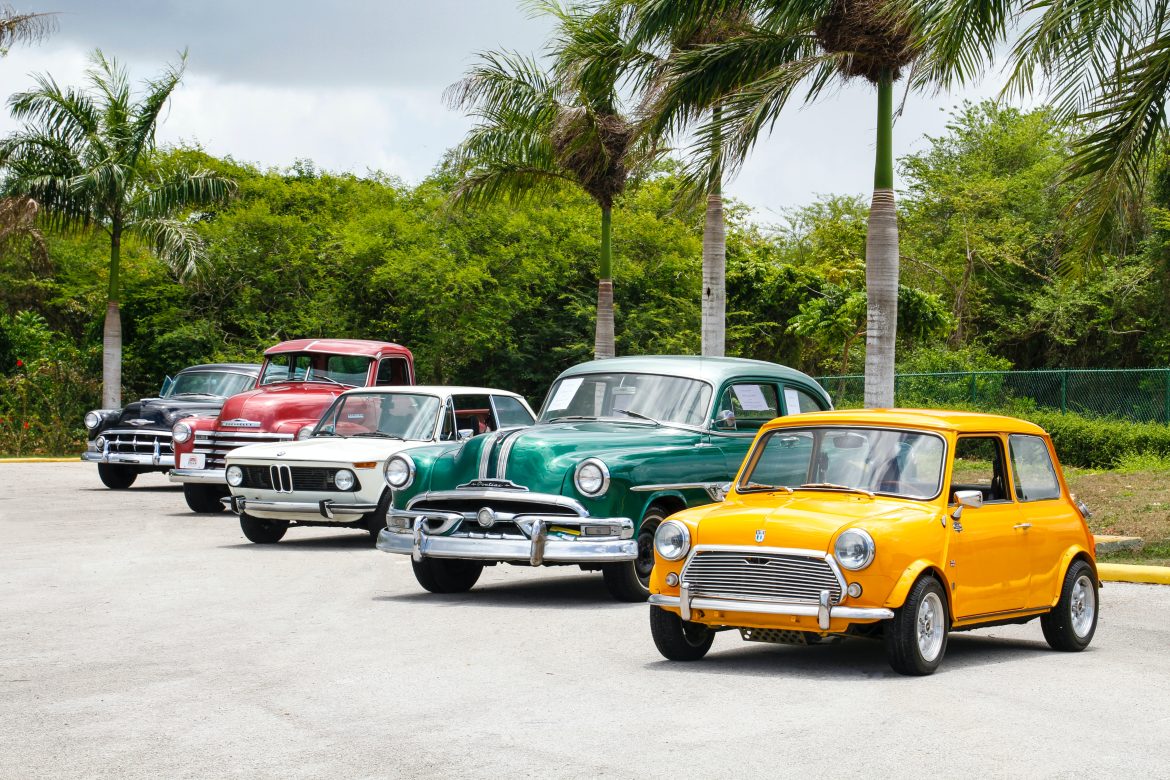You’ve seen the headlines of barn finds fetching six figures at auctions, making one wonder: What modern cars could become the future classics? Could that unassuming sedan or the flashy sports car released this year be a sought-after classic or future icon in the making?
This article is designed to answer these compelling questions. Plus, we won’t just tell you what to look for—we’ll help you find auctions in your area, including ones where you bid online, such as SCA auctions, so you can start searching for your hidden gem.
The Makings of a Future Classic
Identifying future classics is as much an art as it is a science, involving a combination of historical analysis, automotive insight, and economic understanding. The first factor to consider is production volume. Typically, cars manufactured in limited quantities are more likely to be valuable in the future. Scarcity drives desirability and value.
Next, cultural and historical significance plays a crucial role. Cars iconic of their era, linked with notable figures, or associated with significant events often become highly sought-after in the collectors’ market.
In addition, cars with innovative designs or technological breakthroughs often become classics. If a model introduced a new style or pioneered a piece of technology that changed the industry, it stands a better chance of becoming a classic.
Finally, performance and driving experience can also contribute. Cars that deliver unique or superior driving experiences are often remembered and desired by future collectors.
Today’s Rising Stars
Now that we know the characteristics that can give a car ‘future classic’ status, let’s explore some examples of contemporary models that might fit the bill.
For instance, the Tesla Model S, with its breakthrough all-electric technology and record-breaking performance, is a strong candidate. Tesla’s disruption of the auto industry, and the Model S’s role in this disruption, could render it a classic of the electric era.
Similarly, the Toyota GR Supra, revived after almost two decades, also holds promise. With its combination of Toyota’s reliability and BMW’s performance-oriented engineering, it’s quickly gaining a loyal following.
The Porsche Taycan is another contender. As the brand’s first fully electric car, the Porsche Taycan represents a historic pivot towards sustainability, marrying traditional Porsche performance with modern electric propulsion.
The Auction Landscape
Auctions are essential to the car collector ecosystem, serving as primary marketplaces for rare and valuable vehicles. Classic car auctions come in many forms: traditional in-person auctions, online platforms, and even hybrid models that combine live streaming with real-time bidding.
It’s crucial to understand how auctions work, especially regarding their fees and terms of sale. Most auctions charge a buyer’s premium, a percentage added to the winning bid, so be sure to account for this in your budgeting.
Also, consider the condition and provenance of the cars on offer. Auction listings usually provide detailed descriptions and histories of the vehicles, including previous owners, maintenance records, and restoration details. It’s essential to scrutinize these documents to avoid potential pitfalls.
Making the Right Bids
After identifying potential future classics and understanding how auctions operate, the next step is mastering the art of bidding. Successful bidding requires careful preparation, patience, and, quite often, the willingness to walk away.
Begin by setting a budget and sticking to it. Auction environments, including online auctions like SCA auctions, can be charged and competitive, so getting carried away is easy. Additionally, research the market value and recent sale prices of the model you’re interested in. This will give you a sense of what to expect and prevent you from overbidding.
Finally, be patient. If a car goes beyond your budget, remember there will be other auctions and other cars. Patience also applies to the auction itself—don’t rush to place the first bid and try to gauge the room’s interest level before you jump in.
Discovering the Perfect Auction
The quest for potential future classics is incomplete without knowing where to find the right auctions. In today’s digital age, a plethora of platforms provide you with various avenues to explore. These range from online portals to traditional auction houses, making it simpler to find auctions in your area or internationally.
Bring a Trailer, eBay Motors, and Hemmings are among the online platforms that conduct auctions, presenting a broad spectrum of vehicles. However, for a more curated, premium experience, consider SCA auctions. SCA auctions stand out in the realm of vehicle auctions by offering a robust online platform where potential buyers can access a wide range of vehicles across the United States.
For those seeking a more traditional auction environment, renowned houses like RM Sotheby’s, Barrett-Jackson, and Bonhams offer in-person auctions throughout the year at different locations.
The road to securing a future classic car is a thrilling journey filled with research, anticipation, and excitement. With the right platform, the adventure becomes even more enjoyable and rewarding.
Steering Towards Your Future Classic
The journey towards owning a future classic car is both an investment and an adventure, laden with intrigue, research, and the thrill of the hunt.
As we’ve seen, discerning a future classic requires understanding several elements, including production volume, historical significance, technological innovation, and driving experience.
We’ve highlighted potential candidates such as the Tesla Model S, the Toyota GR Supra, and the Porsche Taycan that could gain future classic status. By understanding the auction landscape and mastering the art of bidding, you can confidently navigate these platforms and potentially secure a valuable piece of automotive history.
Remember, the joy of car collecting is not only in owning a valuable asset but also in the journey of discovery, the thrill of the auction, and the story each car has to tell.

